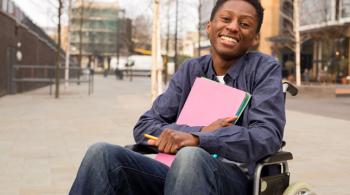By Lisa Carey
October 10, 2017

It appears that 21st century teachers are a very digitally connected bunch. From live Twitter chats and Facebook groups to teacher blogs- educators are reaching out across the Internet to collaborate and learn from each other. As someone who started their career in education after the advent of social media, I have grown a large collection of blogs, teachers, and educational non-profits that I follow on all types of social media. In doing so, I find myself noticing trends in our discourse. I’m also a fact-checker, a researcher, and a total kill-joy when it comes to anything that seems to be lacking in evidence -just ask any of my friends who have dared to post a left-brain, right-brain quiz, only to receive a rebuff about perpetuating neuromyths. So how do the latest trends in education stack up to the facts?
Brain-based Teaching:
This blog has covered many topics related to neuroscience and education, but when “brain-based teaching” pops up in my social media news feeds, it frequently isn’t the type of information I’d want to share. Often the term “brain-based” is used for suggestions that are proscriptive in nature, meaning articles will suggest that if you do X,Y,and Z, then you’re teaching kids’ brains better. But, because brains are highly variable, this proscriptive approach should be avoided. Rather than seeking out quick –fixes that seem neuroscience-based, look for articles that give insight into the developing brain and how to determine expectations that fit with the neurodevelopmental nature of your students. Our blog includes lot of book recommendations and free websites for you to explore more information about the developing brain while avoiding the “brain-based teaching” click bait.
The Importance of Social-Emotional Learning:
Is social-emotional learning as important as it’s made out to be? Research indicates yes!(1) What’s more, the whole idea that you are either being rational or emotional is a myth. The areas of our brains associated with reason and emotion are highly linked and need each other to create memories, learn from past experiences, and make decisions(2). Focusing on children’s social emotional well-being can reduce disruptive behaviors and lessen the negative impacts of toxic stress (3). There is also a possible link between social-emotional learning and executive functions, which are the set of skills required for goal-directed behaviors (i.e. performing in school.)(4). Basically, there is no reason not to embed elements of social-emotional into daily learning activities, so go on and promote this concept on all of your social media. This is a trend worth following.
Color Clip Charts for Behavior Management:
If you like to check out images of beautifully decorated classrooms on social media sites like Pinterest, chances are you’ve seen some very creative and lovely looking color clip charts that are used to monitor student’s behavior. Often times green indicates individual students are well-behaved, while red indicates misbehavior. While I was unable to source any specific research on this particular trend in classroom management, we can examine the elements of this practice based on behavior science. First, this is a system based on punishment rather than reinforcement (in fact, the form of punishment is very linked to public shaming). Since reinforcement has been found to be a more powerful means of positively changing behavior, the clip chart’s focus on punishment puts it at disadvantage to systems that focus on rewarding students with positive attention, recognition, and tangible items for pro-social behavior (5). Secondly, because ways of moving in positive directions on the clip chart are rarely concrete and clear, positive behavior isn’t taught, rather, students who already exhibit positive behaviors are rewarded, while students in need of assistance in developing more pro-social behaviors are punished and left without a system for learning new behaviors(6). Behavior systems that increase pro-social behavior by students include elements such as clear expectations for earning reinforcement (including examples and non-examples for clarity), clear timelines for reinforcement frequency that are age appropriate, and formative feedback to help students adjust their behavior prior to receiving consequences. Unfortunately, looks can be deceiving, and no matter how beautiful, color charts are, they don’t stack up to behavior research. Given the importance of developing positive attitudes toward teachers and school, children who go home “on red” every day are less likely to feel positive about their learning experiences. Focusing on behavior supports that help students learn pro-social behavior while increasing their positive feelings about school will have a lasting impact on student achievement.
Arts Integration:
Using the arts to teach curriculum has the potential to increase creativity and fun in the classroom, but does it work to improve student outcomes? A growing body of literature says yes. Using the arts to teach academic content has been shown to increase long-term student retention of knowledge(7). Other studies have demonstrated a correlation between engaging in the arts and an increase in student executive function skills (4). More interestingly, arts integration practices were shown to have the largest effect on the long-term content knowledge retention of students performing at the lowest levels, meaning that using the arts to teach curriculum may be a promising practice with regard to achievement gap reduction. As far as education trends go, this is one practice that I’m happy to like, retweet, and pin.
Trauma Informed Teaching:
Current research indicates that any trauma children experience can negatively impact the developing brain. This means students who experience traumatic events, such as witnessing violence, experiencing violence first hand, or experiencing catastrophic events, can have difficulties with emotional regulation and cognition as a result of these experiences(8). Building teacher capacity around trauma and its potential impact on student learning is an excellent first step in helping students make academic gains despite having experienced traumatic events. Be cautious when seeking out information. Just as we encourage teachers to think critically about neuroscience and education information, it is important to be careful about sources of information regarding trauma informed teaching. Your school psychologist and/or social worker can be very helpful in identifying quality materials. You can also check out Kennedy Krieger Institute’s Center for Child and Family Traumatic Stress and the Harvard Center for the Developing Child for up-to-date research-based information.
Social media is a great way to connect with teachers, education researchers, and other agencies with a vested interest in improving educational practices. However, just as with any source of information, keep a sharp eye out for false claims and practices that lack an evidence base. Remember to think critically before you like, retweet, share, or pin – but don’t stop sharing!
References:
- Immordino-Yang MH. Emotions, Learning, and the Brain. New York: NY: W.W. Norton & Company Ltd.; 2016.
- Damasio AR. DeCartes error: Emotion, reason, and the human brain. 2nd ed. New York: Penquin; 2005.
- Sibinga EMS, Webb L, Ghazarian SR, Ellen JM. School-Based Mindfulness Instruction: An RCT. Pediatrics [Internet]. 2016 [cited 2017 Jun 19];137(1). Available from: http://pediatrics.aappublications.org/content/pediatrics/137/1/e20152532.full.pdf
- Diamond A. Activities and Programs That Improve Children’s Executive Functions. Curr Dir Psychol Sci. 2012;21(5):335–41.
- O’Neill RE, Albin RW, Horner RH, Sprague JR. Functional assessment and program development. Nelson Education. Wadsworth Publishing; 2014.
- Bambara LM, Kern L, editors. Individualized supports for students with problem behaviors: Designing positive behavior plans. Guilford Press;
- Rinne L, Gregory E, Yarmolinskaya J, Hardiman M. Why Arts Improves Long-Term Retention of Content. Mind, Brain, Educ. 2011;5(2):89–96.
- Greeson JKP, Briggs EC, Layne CM, Harolyn M, Belcher E, Ostrowski SA, et al. Traumatic Childhood Experiences in the 21st Century Century : Broadening and Building on the ACE Studies with Data from the National Child Traumatic Stress Network. J Interpers Violence. 2013;1–21.















